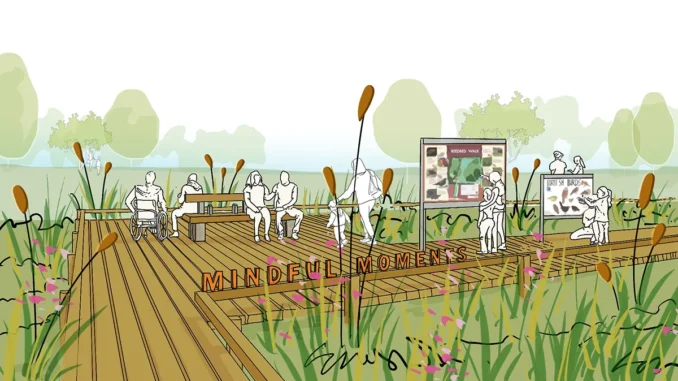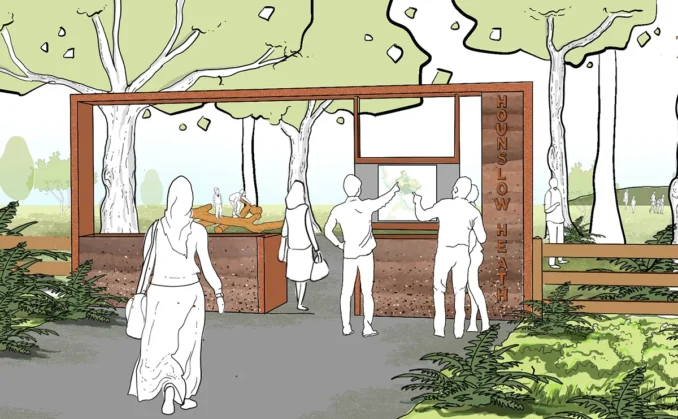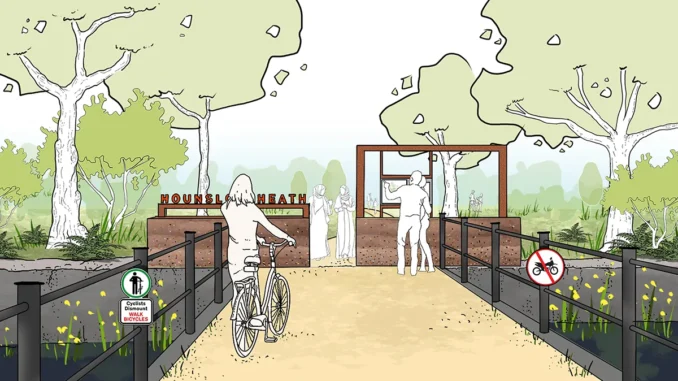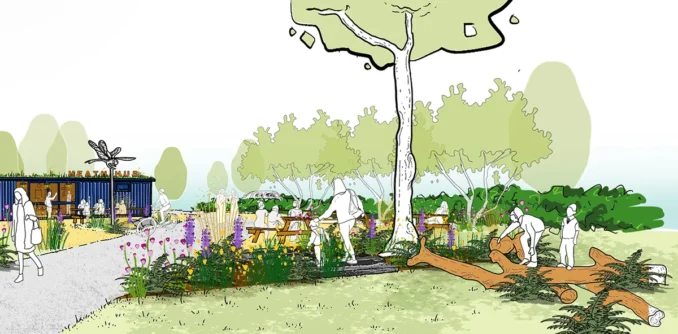The London Borough of Hounslow, LDA Design and the London Wildlife Trust are together shaping a vision for Hounslow Heath, the borough’s only statutory Local Nature Reserve and one of west London’s most ecologically significant sites.
The new masterplan looks to enhance the Heath’s ecology and improve access and safety. Now the team wants to share ideas and find out what local residents think, first through an online survey followed by community events.
The Heath has a colourful history. The northern boundary, Staines Road, was an important Roman Road. In the 17th and 18th centuries, the Heath became a favoured spot for highwaymen, gaining a reputation as Britain’s most dangerous place to travel. It later served as training grounds for cavalry stationed at the barracks nearby and as an airfield in World War I.

Now designated as a Site of Importance to Nature Conservation (SINC), the Heath is part of the River Crane green corridor, which begins in Harrow and ends up joining the Thames at Isleworth. The designation followed years of ecological rehabilitation after the Heath was used for landfill in the 1970s. The Heath now features a mosaic of acid grassland, wetland, scrub, broad-leaved woodland and meadows, all supporting diverse wildlife, including rare or significant species prioritised for conservation such as the adder, birds such as the stonechat, skylark and meadow pipit, and common spotted orchids.

The Heath is also important for local recreation and to environmental education with frequent school and group visits, including weekly walks with the Countryside rangers volunteering group. Footfall has increased over the years aided by a main pedestrian path running from the north to south and passing by several ponds, but there is opportunity to further improve access with new paths through, green transport links and clearer, more inviting entry points and sightlines, all strengthening local connection to the space. New trail routes and wayfinding will help people explore the Heath and discover its rich landscape.

The proposals aim to create distinctive character areas to suit different uses. The Heath Hub and Fair Field offer flexible spaces for events and recreation with elements of natural play, while Heather Pens and the Wild Woodland, including Paradise wood, focus on biodiversity providing sanctuaries for local wildlife. A raised Reedbed Walk invites quiet reflection, with educational boards along the way highlighting points of interest and habitats.

Ross Schaffer, Senior Consultant, LDA Design says, “The masterplan strikes a balance between restoring nature, deepening human connection and protecting the Heath’s rich ecological and historical legacy. The Heath is a place to learn from and a place to enjoy. We want to enhance the ecology thriving here but also see more people in Hounslow benefit from using this incredible local asset. This means making getting to and around the Heath as easy as possible.”
Engagement on the proposals closes Friday 20 June:
https://talk.hounslow.gov.uk/hounslow-heath-masterplan
→ Continue reading at World Landscape Architecture
